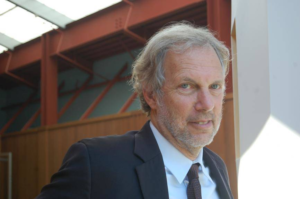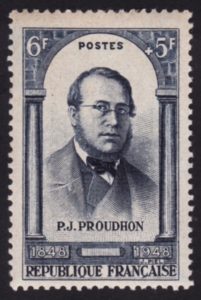It’s Time To Nationalize The Fossil Fuel Industry
The COVID-19 pandemic’s impact on the economy provides a golden opportunity for creating a fairer, more just and sustainable world as it shatters long-held assumptions about the economic and political order. Its impact on the energy industry in particular can boost support for tackling the existential threat of global warming by raising the prospect of nationalizing and eventually dismantling fossil fuel producing companies, a position argued passionately by one of the world’s leading progressive economists, Robert Pollin, distinguished professor of economics and co-director of the Political Economy Research Institute at the University of Massachusetts at Amherst.
C.J. Polychroniou: It has been argued by many that the coronavirus pandemic is a game changer for numerous industries, and could change the way we work and the way we use energy. We could also see the possible return of the social state and thus the end of austerity. First of all, are there any comparisons to be made between the current health and economic crises and what took place during the Great Depression?
Robert Pollin: There is one big similarity between the economic collapse today and the 1930s Great Depression. That is the severity of the downturns in both cases. The official U.S. unemployment rate coming from the Labor Department as of May 2020 was 13.3 percent. But a more accurate measure of the collapsing job market is the number of workers who have applied for unemployment insurance since the lockdown began in mid-March. That figure is 44 million people, equal to about 27 percent of everyone in the current U.S. labor market, employed or unemployed. By contrast, during the Great Recession of 2007-09, official unemployment peaked, and for one month only, at 10.0 percent.
However, between 1930 and 1939, U.S. unemployment averaged about 18 percent, peaking at nearly 25 percent in 1933. The obvious difference between the 1930s and now is that the 1930s figure is an average over 10 brutal years. Our current severe job market is not going to last for 10 years. It could only last for a few more months, before the official unemployment rate gets to something like the more “benign” levels of Great Recession years, i.e. “only” 8-9 percent. Still, since the March lockdown, the severity of the unemployment crisis has been comparable to the 1930s.
This brings up the single most critical point of contrast between the 1930s and today. That is, we could have easily seen a decade-long economic depression now, except for the fact that the federal government today has intervened to an unprecedented extent to counteract the depression, while in the 1930s, the government did not intervene at the necessary scale until World War II.
The list of ways in which orthodox economists and government policymakers today are clueless is very long indeed. But they have at least figured out that, to stave off a 1930s-level depression, you pump massive amounts of money into the economy. For now, this has thus far included the so-called CARES Act, which passed Congress and Trump signed in March. This was a $2 trillion injection, equal to about 10 percent of the overall U.S. economy (Gross Domestic Product, or GDP), and still more important, Federal Reserve bailout funds for big corporations and Wall Street, to the tune of something like $5 trillion — 25 percent of GDP — and counting. Without the CARES Act and Federal Reserve bailouts, we could easily be looking right now at a replay of the 1930s. Things are bad enough as it is, of course. Plus, it is clear that the federal government funds are largely being stuffed into the pockets of corporations instead of where they are needed. Spending on public health — in the midst of a pandemic no less — as well as public education, and direct support for workers and the poor are getting short shrift, as usual.
The oil and gas industry has been particularly hard hit during the coronavirus pandemic. In that context, some, including yourself, have argued quite passionately that the time is ripe for nationalizing the fossil fuel industry. What would be the advantages of doing so? And how could we finance the transition to a sustainable energy future?
The underlying issue here is that, according to the thoroughly mainstream and highly cautious projection of the Intergovernmental Panel on Climate Change (IPCC) we, the residents of planet Earth, have 30 years total to achieve net zero carbon dioxide (CO2) emissions to have a reasonable chance of avoiding the most severe impacts of climate change — in terms of heat extremes, heavy precipitation, droughts, floods, sea-level rise and biodiversity, and the corresponding impacts on health, livelihoods, food security, water supply and human security. There is no avoiding what this means — which is that the global fossil fuel industry simply must be put out of business within the next 30 years. This is for the simple reason that burning fossil fuels to produce energy is what spews CO2 into the atmosphere, and is therefore the primary cause of climate change. The need to put an end to the fossil fuel industry remains an imperative, regardless of whether the industry is facing financial difficulties, as they are at present, or swimming in profits. Everyone on the planet simply has to stop burning oil, coal and natural gas to produce energy. We can, of course, take it as a given that the fossil fuel companies will fight fiercely, using every single tool at their disposal, to keep themselves alive, so that they can continue to reap big profits from destroying the Earth.
For that reason, probably the best way to defeat the fossil fuel companies, at least in the U.S., is for the federal government to buy them. That would bring the companies under public scrutiny and control, which should, in turn, create a clear path for giving them more than what they actually deserve — which is a well-thought-out plan for a relatively painless death over the next 20 years or so.
Now it so happens that the U.S. and global oil industry is experiencing a severe crisis at present unrelated to climate change issues. The current crisis has resulted from the collapse of demand for energy resulting from the pandemic and recession, and even before this, in early 2020, an oil price war between Russia and Saudi Arabia. Thus, the global price of oil fell by more than 50 percent in early 2020, before the onset of the pandemic. Reflecting these developments, a report on March 26 by the Federal Reserve Bank of Dallas presented a “bleak outlook” for the oil industry over the near future, stating that “industry layoffs and bankruptcies and lower U.S. crude oil production seem inevitable.” Given these conditions, the U.S. oil and gas industry has been a major recipient of bailout funds, to keep the sector alive. But why should we keep these industries alive in the first place, since they absolutely must be phased out within the next 20 years anyway?
It is critical to recognize that combined market value of the U.S. energy sector fell by nearly 50 percent between the beginning of 2020 and mid-April, from $1.27 trillion to $700 billion. The industry has rebounded modestly (but only modestly) since April as lockdown conditions are loosening. The point, in any case, is that the U.S. federal government could purchase a controlling interest in the entire U.S. industry now for around $350-$400 billion. This amounts to less than 10 percent of the bond purchases that the Federal Reserve has undertaken since March and is expected to continue doing in the coming months to bail out Wall Street. To be a bit specific, the federal government could borrow the money to purchase a controlling interest in the U.S. oil industry, and the Federal Reserve could buy the Treasury Bonds, thereby effectively taking these bonds off the government’s books. It’s the type of financial engineering operation that the Treasury and Fed could execute easily within the existing policy environment.
If this sounds like an outlandish proposal, it is useful to keep in mind that, during the 2007-09 Great Recession, the federal government did nationalize General Motors and Chrysler, two iconic U.S. corporations. It was at that time, moreover, the Obama administration that established stringent fuel efficiency standards for the industry — the standards that Trump has been trying to revoke, of course.
Is the plan that you advocate for the nationalization of the fossil fuel industry similar to the one that was advocated by the Labour Party in the U.K. a few years ago — namely, a publicly owned but decentralized energy system?
I actually favor a mix of ownership forms for a transformed energy system — that is, some public ownership, but also private ownership, especially at smaller scale, including community and cooperative private ownership. Opportunities to develop these alternative smaller-scale ownership forms become a realistic possibility with a transformation to an energy system that relies primarily on solar and wind power, with all economic sectors operating at high efficiency. The issue of who owns the energy resources is obviously of major significance. At the same time, in my view, the single most important question is not the ownership form per se, but rather whether we are truly on the path to completely supplanting the existing fossil fuel-dominant energy system with one dominated by clean renewable energy sources and high efficiency.
Can nationalization of the energy industry alone guarantee that we will avert a climate change catastrophe?
The answer is clearly “no.” In fact, throughout the world, the energy sector has long operated under a variety of ownership structures, including public/municipal ownership, and various forms of private cooperative ownership in addition to private corporate entities. Indeed, in the oil and natural gas industry, publicly owned national companies control approximately 90 percent of the world’s reserves and 75 percent of production. They also control many of the oil and gas infrastructure systems. These national corporations include Saudi Aramco, Gazprom in Russia, China National Petroleum Corporation, the National Iranian Oil Company, Petróleos de Venezuela, Petrobras in Brazil and Petronas in Malaysia. None of these publicly owned companies operates with the same profit imperatives as big private energy corporations, such as ExxonMobil, BP and Royal Dutch Shell. But this does not mean that they are prepared to commit to fighting climate change simply because we face a global environmental emergency. Just as with the private companies, most of the time, producing and selling fossil fuel energy generates huge revenue flows for these companies. National development projects, lucrative careers and political power all depend on continuing the flow of large fossil fuel revenues. We should therefore not expect that public ownership of energy companies will, by itself, provide a more favorable framework for advancing effective clean energy industrial policies.
Wouldn’t there be job loss in the fossil field industry because of decarbonization? If so, how do we ensure that trade unions go along with the idea of nationalizing the fossil fuel industry?
This is a critical question. Everyone needs to recognize that workers and communities in the United States, as well as throughout the world, whose livelihoods depend on people consuming oil, coal and natural gas are going to lose out in the clean energy transition. It is therefore only a modest exaggeration to say that the fate of the planet depends on whether we can put in place what the late, great labor organizer Tony Mazzocchi initially called just transition policies for these workers and communities. Just transition policies have to include job, wage, pension and health care guarantees, along with retraining and relocation support, as needed, for all displaced workers. A just transition must also include large-scale investments in heavily impacted communities. These investments could be, for example, in the areas of land reclamation and repurposing, as well as new investments in clean energy manufacturing. Such policies are certainly justified according to any standard of fairness. But they are also a matter of strategic politics. Without such adjustment assistance programs operating at a major scale, the workers and communities facing retrenchment from the clean energy investment project will — along with their union representatives — predictably and understandably fight to defend their communities and livelihoods. This in turn will create unacceptable delays in proceeding with effective climate stabilization policies.
If the coronavirus pandemic offers an opportune time to reshape advanced capitalist societies, what other sectors of the economy would you recommend that they fall under public ownership?
I don’t think we should assume that a transformation of the U.S. economy to advance equality, economic stability and ecological sanity necessarily requires public ownership across the board. As I mentioned before, how do we deal with the fact that most of the world’s energy assets are already publicly owned? But let’s consider our ever more obviously disastrous health care system as another case in point. The U.S. health care system is currently dominated by giant private insurance and pharmaceutical companies as well as big hospital conglomerates. Here I would say step one is to establish Medicare for All — that is, everyone having the right to decent health care, with nobody facing any financial challenges at all in getting the care they need, including for all types of COVID testing and treatment, along with paid sick days off. Under Medicare for All, some health care providers and hospitals could still operate as private entities, under the regulatory system established by Medicare for All. I would call that a mixed system, with public ownership of the health insurance provision, with some private ownership of physicians’ practices, community clinics and hospitals.
To me, the overarching question is not public or private ownership as such. The fundamental challenge is rather to always try to understand the alternative pathways to most effectively build truly egalitarian, democratic and ecologically sustainable societies, putting all labels aside. That should always be our starting point in addressing the issue of public ownership, in the U.S. or anyplace.
This interview has been lightly edited for clarity and length.
Copyright © Truthout. May not be reprinted without permission.
C.J. Polychroniou is a political economist/political scientist who has taught and worked in universities and research centers in Europe and the United States. His main research interests are in European economic integration, globalization, the political economy of the United States and the deconstruction of neoliberalism’s politico-economic project. He is a regular contributor to Truthout as well as a member of Truthout’s Public Intellectual Project. He has published several books and his articles have appeared in a variety of journals, magazines, newspapers and popular news websites. Many of his publications have been translated into several foreign languages, including Croatian, French, Greek, Italian, Portuguese, Spanish and Turkish. He is the author of Optimism Over Despair: Noam Chomsky On Capitalism, Empire, and Social Change, an anthology of interviews with Chomsky originally published at Truthoutand collected by Haymarket Books.














